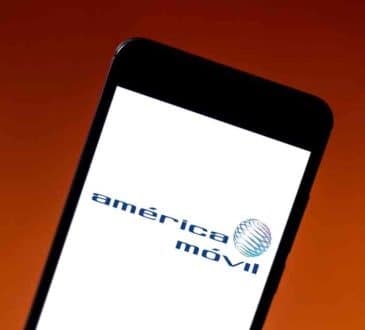Are You a Roy or a Joe?

Several years ago, I read the book “Tribal Leadership: Leveraging Natural Groups to Build a Thriving Organization” and, while writing The “Power of Peers: How the Company You Keep Drives Leadership, Growth, and Success” in 2016, enjoyed the good fortune of collaborating with one of its coauthors Dave Logan.
The book describes five stages of culture, including Stage 3, called the “I’m Great” (by definition, you’re not) culture – practiced by leaders in nearly half of US companies. Stage 4 leaders exhibit characteristics that support the concept of “We’re great” – a leader who is a part of the team, not standing apart from it (evident in about one-quarter of US companies). When you consider that collaboration, involving mutual respect and cooperation, has never been more critical, then it may be worth some leadership reflection as we enter the final month of 2020.
I reference this book because I’m going to describe two leaders: Roy and Joe.
Roy motivates.
Joe inspires.
While most of you who read this will want to identify with Joe, statistically speaking, as many as half of you could be Roys. Who do you see when you look in the mirror?
Roy
Shortly after having graduated college, I accepted a sales position at a local Ford dealership. There was the owner, the general manager, and the sales manager. The general manager essentially ran the show. His name was John – a well-dressed Bob Newhart figure, both in his understated demeanor and dry sense of humor. Roy, the sales manager, was a chain-smoking tyrant. The duo was similar to what I remember from junior high school, with the ambassador-like principal who everyone loved and the badass assistant principal who everybody feared.
At the dealership, Roy was our assistant principal, so to speak. To paint a picture, he rode everyone hard, all the time. If Roy sensed a hint of inactivity in your eyes, he would throw a phonebook at you and tell you to call twenty landscapers and sell them a truck. Roy would proudly tell you that he ran a tight ship and that if it were not for his domineering, take no prisoners leadership style, there wouldn’t be any sales. Not getting hit with a phonebook was undoubtedly motivating but hardly inspiring.
Joe
While working at Mullen about 25 years later (today MullenLowe), I participated in a new business pitch to a major prospective client in New York. Agency CEO Joe Grimaldi closed the presentation by stating to the prospect, “You won’t come across another agency who will care more than Mullen about your business and your success.” I had been at the agency just long enough to want to stand up in that moment and say, “He’s right, you know.” I had worked for several agencies over the years, and it was the first time in my life I had ever heard those words delivered by a CEO with such conviction and sincerity. I knew the agency had the culture to back it up.
For starters, Mullen’s CEO was part of the presentation team from the get-go. Joe Grimaldi didn’t just show up on game day. His presence at the meeting was a clear demonstration to the prospective client that its business mattered to the agency. Grimaldi later showed us that our team was essential to him, too. After the presentation, he received an urgent call that took him out of the room as we were packing up before flying back to Boston. None of us gave it a second thought until we got home that night. Before going to bed, I checked my email and discovered a note he sent to everyone on the team, apologizing for being pulled away. He said that he failed us in his role as CEO (chief encouragement officer) and proceeded to applaud everyone’s collective effort and state that we had every reason to celebrate the great work we did together regardless of the outcome.
During the presentation and to the team that night, Grimaldi’s words spoke to the culture that he, executive creative director Edward Boches, and others had built over many years. While I was there, the leaders lived it, modeled it, and inspired everyone at the agency. (Mullen won the business, by the way.)
Summary
Dave Logan would be the first to say that not every Stage 3 leader behaves like Roy. I would also suggest that Joe Grimaldi often exhibited the traits of a Stage 5 (Life is Great) leader, one who sets a new standard of excellence (beyond simply being better than the competition) and inspires others to work together toward the same end. As you reflect on your leadership style and your team’s strengths, 2021 will require setting an even higher bar – one that will involve inspiring cooperation and collaboration in your organization. As a leader, the power of we begins with you.
Written by Leo Bottary. Have you read?
CEO Spotlight: Andrew Miller’s Take on How CEOs Should Deal with Employee Complaints.
CEO Spotlight: Nick Lai – Mastering Digital Age With Malaysia’s Best Digital Marketing Agency.
Add CEOWORLD magazine to your Google News feed.
Follow CEOWORLD magazine headlines on: Google News, LinkedIn, Twitter, and Facebook.
This report/news/ranking/statistics has been prepared only for general guidance on matters of interest and does not constitute professional advice. You should not act upon the information contained in this publication without obtaining specific professional advice. No representation or warranty (express or implied) is given as to the accuracy or completeness of the information contained in this publication, and, to the extent permitted by law, CEOWORLD magazine does not accept or assume any liability, responsibility or duty of care for any consequences of you or anyone else acting, or refraining to act, in reliance on the information contained in this publication or for any decision based on it.
Copyright 2024 The CEOWORLD magazine. All rights reserved. This material (and any extract from it) must not be copied, redistributed or placed on any website, without CEOWORLD magazine' prior written consent. For media queries, please contact: info@ceoworld.biz
SUBSCRIBE NEWSLETTER








